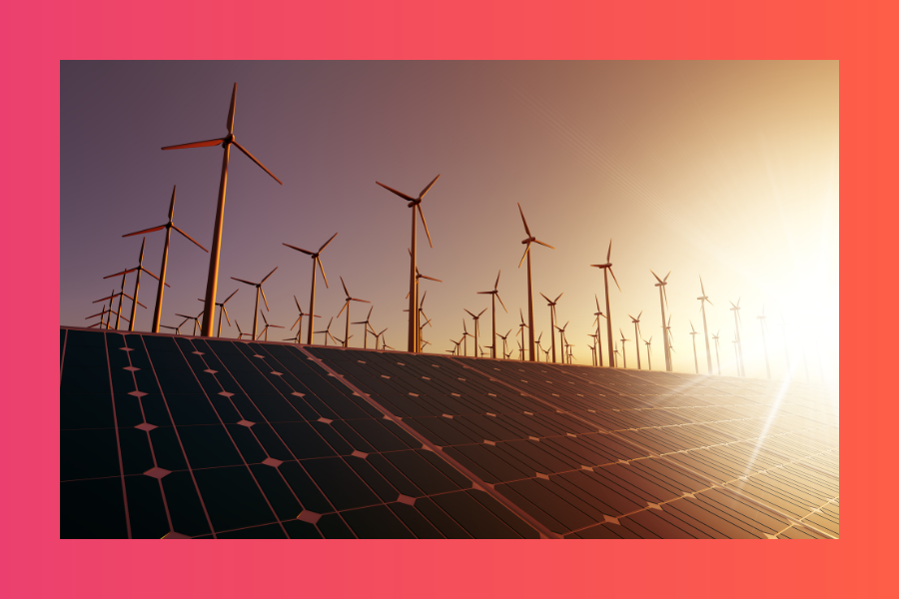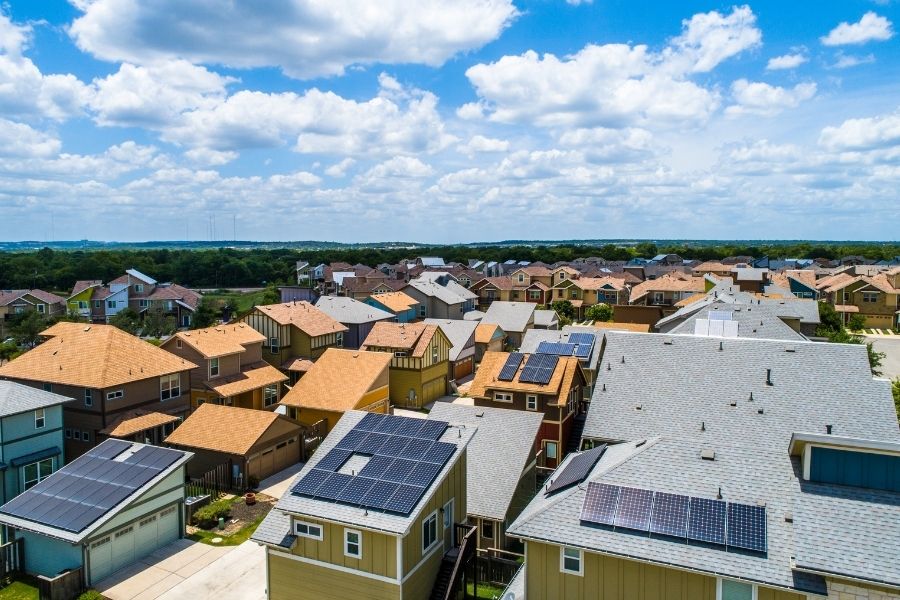5 min read
What AEMO’s 30 Year Plan Means for Australian Solar Consumers
![]() Solar Trust Centre Team
:
Dec 8, 2022 5:28:13 PM
Solar Trust Centre Team
:
Dec 8, 2022 5:28:13 PM
.jpg)
By any measure 30 years is a long time. For a quick bit of context, 30 years ago Australia had not yet hosted the Sydney Summer Olympics, the original Playstation - much less the PlayStation 5 - was not even released, and social media as we know it today simply did not exist. It’s understandable then that just as 30 years ago seems a long while back, 30 years from now seems impossibly far away. Yet when it comes to planning for a country’s infrastructure - and crucially, how that infrastructure will serve the community - 30 years can be a mere blink of the eye.
That’s why even though the Australian Energy Market Operator’s (AEMO) 2022 plan for the National Electricity Market (NEM) between now and post-2050 may at first seem like an exercise in guesswork, in fact the reality is it’s an illustration of a lot of hard work. Not only in terms of the blueprint laid out for where Australia needs to go surrounding its energy future, but how we can get there. It's true in the context of many decades the current energy crisis the country is facing now may in time ahead appear more akin to a speed bump than a never-ending horror show. This said, the reality is Australia does need to make significant change to its energy operations if the national grid is going to provide reliable and affordable power in the decades ahead. That’s why now - and indeed, especially now given the current utility bill price-crunch many households are experiencing illustrates why the good operation of the NEM is such an important factor in daily life - it’s a good time to look at AEMO’s 30 year plan.
A Consultation Before the Crisis
.jpg?width=900&height=600&name=STC%20-%20Featured%20and%20Content%20Images%20(8).jpg)
AEMO’s report - officially called the Integrated System Plan (ISP) - has been released following consultation with in excess of 1,500 stakeholders. Representatives of governments and the energy industry, policy makers, and consumers, were included in these consultations. It’s important to note the NEM does not cover all of Australia - Western Australia and the Northern Territory are not in the NEM, and have their own individual arrangements when it comes to the operation and regulation of their grids - but it covers all of Australia but for these two jurisdictions, and accordingly its efficacy in operations has a huge bearing on the great majority of the population. This is the third ISP that AEMO has produced, and - while it is informed by data dating before and up until 15 October 2021 - it offers a contemporary snapshot of the state of the NEM.
Since then, there has of course been some events which have substantially impacted the operation of the market - among them the Ukrainian conflict, and soaring inflation (which was an issue last year but has risen higher and faster than many economists expected) - but it is expected even if these matters take many months or years to come to a resolution, certainly within 30 years they shall indeed do so. Accordingly, the following discussion of the AEMO’s report is made with the recognition that it has been prepared reliant on data prior to the seismic shocks delivered to Australia’s energy market in 2022. Yet also, with the recognition that ultimately the vision for Australian energy in the lead up to and beyond 2050, is not expected to be profoundly impacted by these aforementioned events in the long term.
The Key Takeaways from AEMO’s ISP
While AEMO has released a plan for the next 30 years, it is one that speaks with a sense of urgency about what can - and indeed, must - get done soon. As detailed above, this is not in light of the 2022 energy crisis, but instead in regards to ensuring the necessary move towards renewables, and the replacement of existing energy sources provided by coal generation, is done as seamlessly as possible.
The core pillars upon which the ISP lays out a plan for NEMO between now and 2050 are security, reliability, and affordability, for consumers. It is clear-eyed in detailing the reality that maintaining and enhancing the grid between now and the middle of the century will require a huge uptick in infrastructure. The report calls for a nine-fold increase in grid-scale wind and solar, a five-five increase in distributed solar, and a tripling of the firming capacity as it concerns hydro and dispatchable storage (as well as gas-fired generation).
An emphasis upon encouraging the rapid progress of a number of transmission projects is visible within the ISP. In particular, five projects - Marinus Link, Sydney Ring, New England REZ Transmission Link, VNI West, and HumeLink - have been flagged as endeavours which should progress when first able due to their central importance to the optimal development path (ODP).
Why is Transmission So Important to Consumers?
For any of our valued STC readers that may not yet know as much as transmission as they would like, it’s understandable AEMO’s emphasis on it may seem a bit unusual at first. After all, the thinking could go as follows: ‘I get that we certainly need more renewable energy sources like solar power and wind power, but why is there all this focus on transmissions - basically the ‘power cables’ - instead of the actual infrastructure that generates the energy?’ The answer to this question ultimately is about scale, as - even if a household fan and wind power installation may look similar in terms of their basic construction and operation by oscillation - the efficient transmission of energy across the country is a very different prospect in comparison to transmission between generator and user in other contexts, such as within household goods in a home.
.jpg?width=900&height=600&name=STC%20-%20Featured%20and%20Content%20Images%20(9).jpg)
Just as the world is growing more energy-hungry generally each year - for example, all the handheld digital gadgetry we use (while typically comparatively low consumers of energy overall compared to other electronic devices) in contrast to 100 years ago has collectively added great new demand on the grid - new capacity has been added to Australia’s energy grid over time, but it’s presently struggling to keep up with surging demand. Especially because though the new capacity is welcome, larger parts of the grid are showing their age, and thus there’s a need for a big modernisation effort.
In tandem to growing demand, there’s another important factor to note too. While the uptake of rooftop solar systems across Australia has been a huge and positive success story in recent years, Australian electricity grids were ultimately designed for one way traffic - sending power from a generation point like a coal plant to homes - and not for a world where individual households can feed excess solar energy into the grid via their solar system. A modernised transmission system means an ability for the NEM to meet contemporary demand, to prepare for growth in demand in future, to drive down the risk of supply being unreliable - even outright ceasing with blackouts - and also to facilitate more easily the two way flow of electricity.
Taking a Step in the Right Direction With Rooftop Solar Power
Allowing for the fact the world was indeed very different for renewable energy 20 years ago, the famous old adage, 'The best time to plant a tree was 20 years ago, the second best time is today’, has currency here when it comes to considering the future of solar power in Australia. This is applicable to the national, local, and individual household-level. We’ve discussed above AEMO's vision, and there will of course be endeavours by other organisations (for instance, state governments) who also seek to build a cleaner and greener Australia. But ultimately, when it comes to the most direct and immediate step forward that can be taken in this area, often it indeed exists at the individual household-level.
This is because while (even if otherwise going great and doing terrific things), of course the wheels of big institutions like a government will always move somewhat slowly. By contrast, an eligible household that is keen to go green and acquire a rooftop solar system can get started on the process the same day. It’s indeed important to not rush and do thorough research, but when it comes to the benefits a rooftop solar system can bring, there’s no doubt a reduction in energy bills today, having some defence against any future price rises tomorrow, and the ability to make a small, but significant contribution to making Australia sustainable, are understandably benefits of great interest to countless Australians. Furthermore, a rooftop solar system with a backup battery and the right specifications can also provide some protection against the risk of neighbourhood-wide blackouts in future, which is an important consideration for the next few years as fossil fuel energy sources continue to flounder, and while more of the reliable and dependable renewable energy installations of the future are brought online in their place.
All up, there’s never been a better time to look to become a rooftop solar owner. For those currently interested in doing so, alongside this article, there are a number of other pieces here at STC which would be worthwhile to read to build a greater understanding of the ins and outs of rooftop solar systems.
Read more related blogs
.jpg)
Comparing Australia and Germany in Going Green
Australia and Germany share a great deal in common when it comes to going green. At first glance, it may not seem like this is the case. After all,...

Australian Energy 101: Explaining AEMO’s Decision to Suspend the Spot Market
On Wednesday June 15 2022 the Australian Energy Market Operator (AEMO) announced that under the National Electricity Rules (NER) they were suspending...

